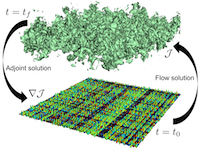|
|




|
|
|
Background Many natural and industrial processes involve the flow of solid particles or liquid droplets whose dynamical evolution and morphology are intimately coupled with a carrier gas. A peculiar behavior of disperse multiphase flows are their ability to give rise to large-scale structures (hundreds to thousands of times the size of individual particles) that can ultimately drive macroscopic quantities of interest. For example, gas-phase convection between particles, conduction at the particle surface, wakes shed by particles, and catalytic reactions give rise to dynamic coherent structures in the form of dense clusters and particle-free voids. Such coupling can effectively ‘demix’ the underlying flow, which has enormous consequences in engineering systems. Here, cluster-induced turbulence (CIT) refers to flows in which fluctuations in particle concentration can generate and sustain fluid-phase turbulence. Simulation results from fully-developed CIT show that momentum coupling between the two phases leads to significant differences from the behavior observed in very dilute systems with one-way coupling. In particular, entrainment of the fluid phase by clusters results in an increased mean particle velocity that generates a drag production term for fluid-phase turbulent kinetic energy that is highly anisotropic. Using a novel filtering technique, the local instantaneous granular temperature can be separated from the phase-average particle-phase turbulent kinetic energy. Observations from the simulations indicate that high values of the granular temperature correspond to regions in front of falling clusters where the particle-phase velocity is strongly compressed in the vertical direction, referred to as compressive heating. |
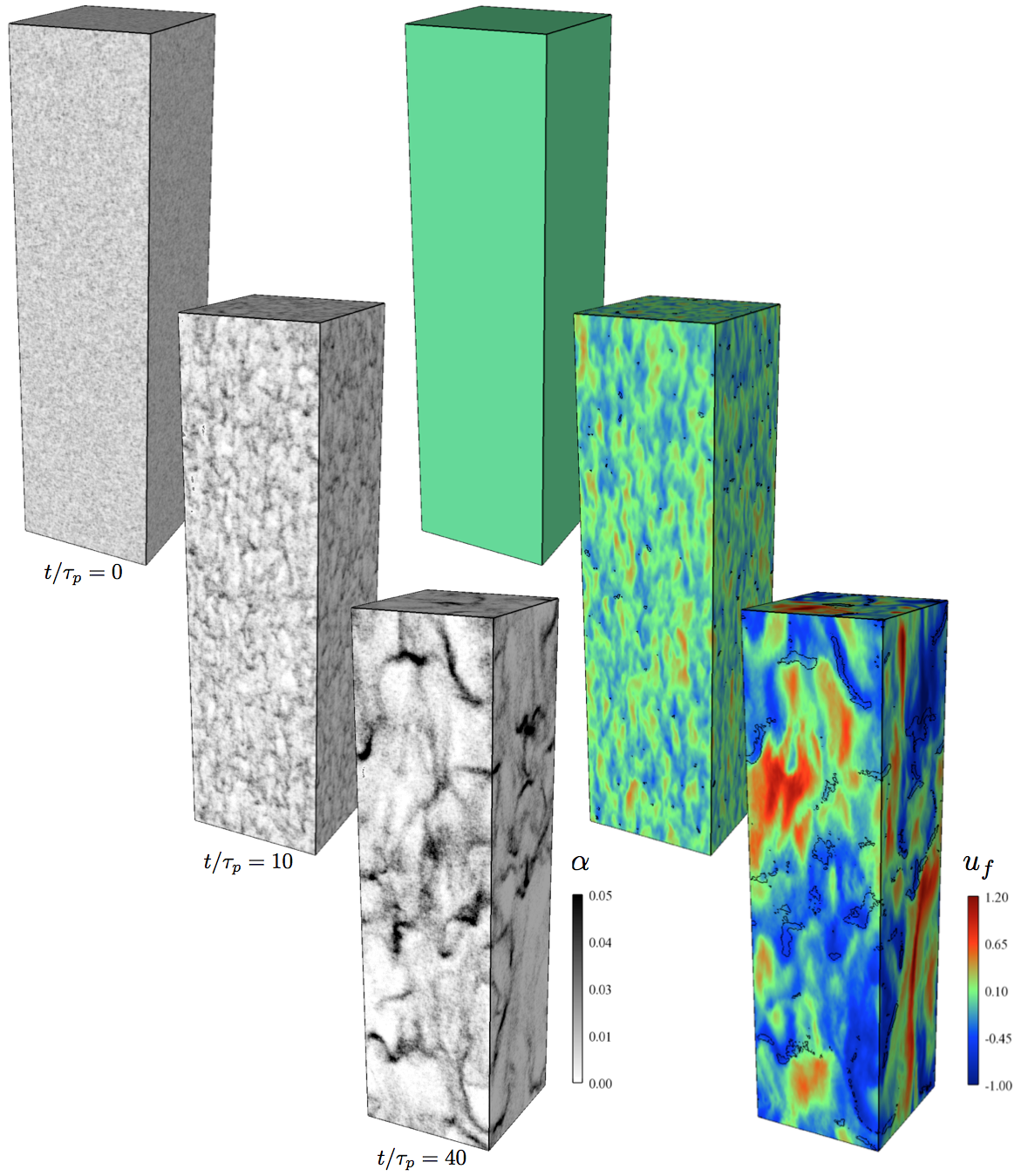 Numerical simulation of particles clustering during free fall. Time evolution of particle positions (left) and fluid velocity (right). |
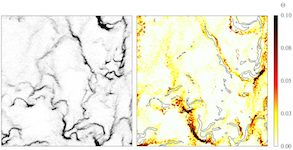
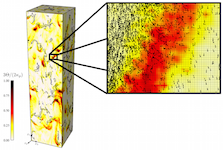
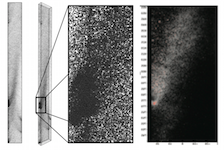
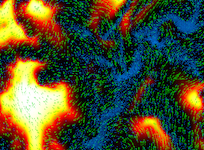
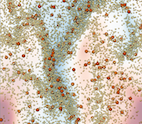
|
Background Compressible multiphase flows exhibit a wide range of interesting phenomena that play important roles in engineering and science. Our group focuses on developing methods capable of accurately capturing the interactions between a collection of particles (e.g., solid particles or liquid droplets) and shock waves in compressible viscous flows. Here we apply these methods to understand the role of droplet-turbulence interactions on jet noise, in addition to fundamental instabilities that form as shock waves pass through a curtain of particles. |
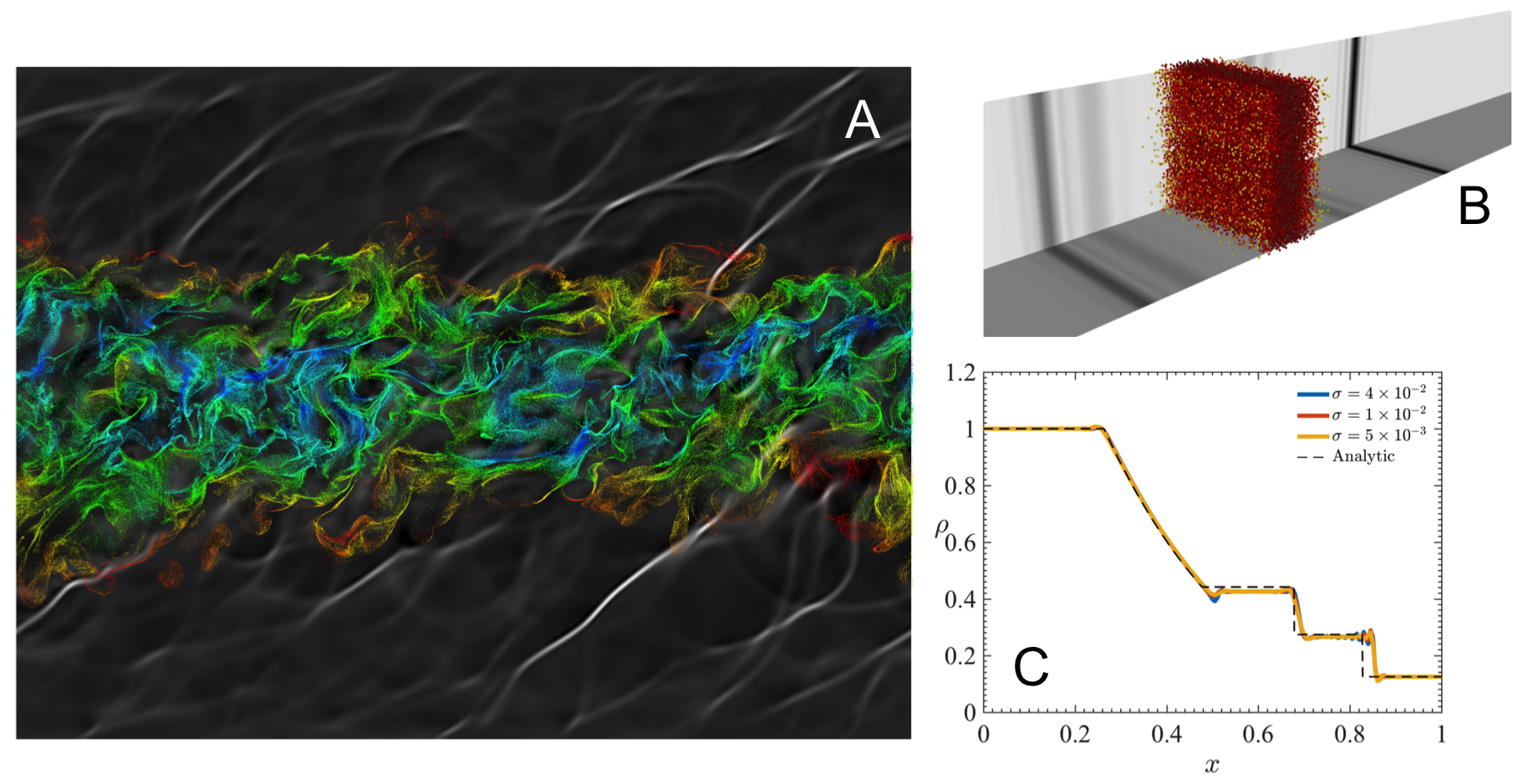 Compressible multiphase flow calculations. (A) 25 M particles in a Mach 2.5 shear layer, (B) particle-laden shock tube, and (C) Sod shock tube demonstrating shock-capturing capability. |
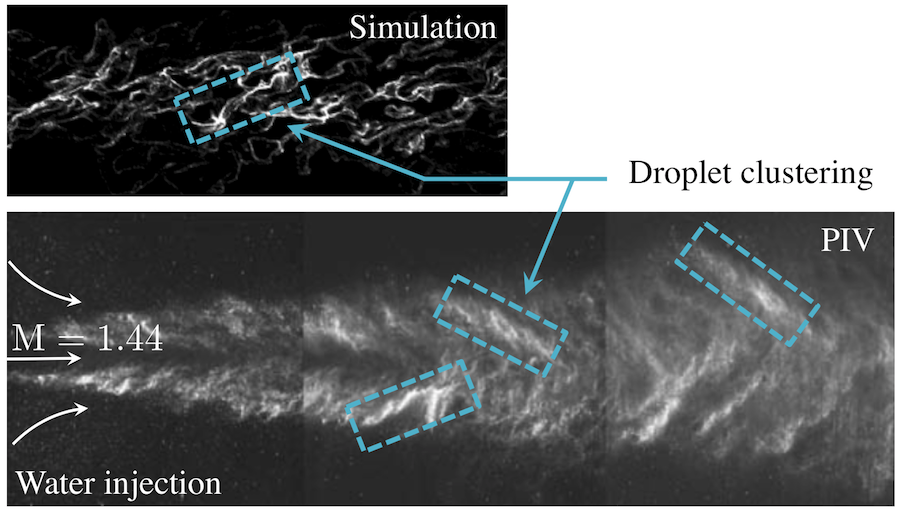
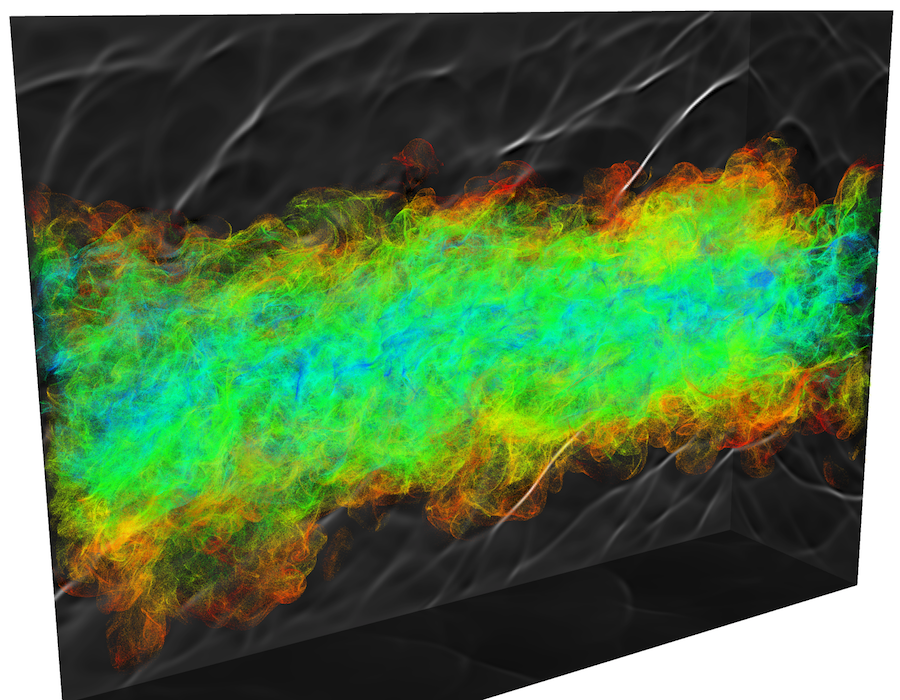


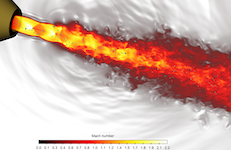
|
Background
Non-trivial interactions between electrically-charged particles and turbulence can have important effects in many engineering and environmental flows, including atmospheric clouds, colloids, electrosprays, and protoplanetary nebula (dusty plasma). Due to the long-range nature of electrostatic forces, properly accounting for Coulomb interactions in systems with many particles must be handled carefully for accurate predictions that avoid N^2 computations. The images to the right show particles settling under gravity in a two-dimensional periodic flow. Momentum coupling with the background fluid leads to significant clustering of the particle phase. In the presence of an electric field, Coulomb repulsion homogenizes the system. In spray combustion systems, clustering of droplets delays the evaporation rate and significantly reduces operating efficiencies. Charged injection atomizers that generate electrically charged sprays can potentially offer several benefits to conventional fuel injection systems. In addition to enhanced mixing and reduction in droplet agglomeration via Coulomb repulsion, control over the droplet size distribution and flame shape downstream of the injection nozzle is possible. Moreover, as droplets evaporate, they retain their charge until reaching a critical radius, in which the charge is transferred to the gas phase via a corona discharge. Meanwhile, very little is known about this process. In addition to possible applications in combustion, advancing the predictive capabilities of electrically-charged droplets in turbulence is crucial for understanding the onset of rain formation in clouds. Throughout the atmosphere, ion pairs are produced by cosmic rays that attach to aerosol particles and droplets. Even in fair-weather clouds, attachment of air ions to cloud droplets significantly reduces the ion concentration. Ionization of atmospheric air together with the potential difference that exists between the upper atmosphere and the earth’s surface generates a non-negligible vertical electric field. Interactions between this electric field and charged droplets will thus directly affect coalescence and collisions that dictate the onset of rainfall. |
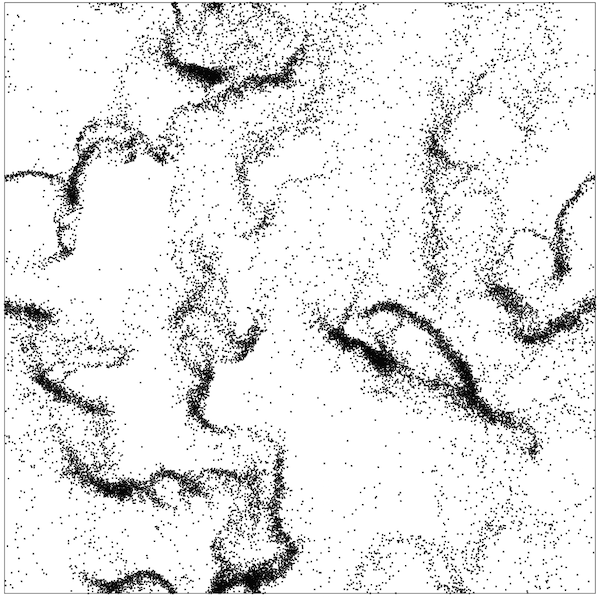 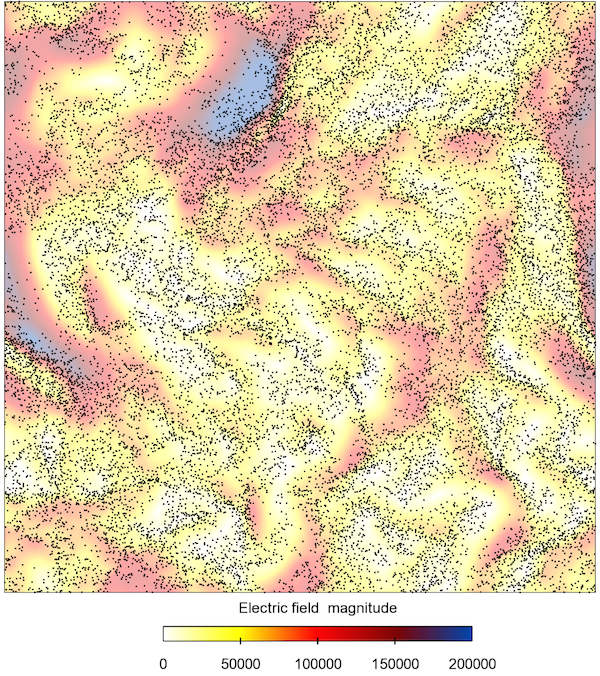 Cluster mitigation by an imposed electric field on settling charged particles. Uncharged (top), charged (bottom). |
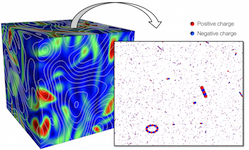
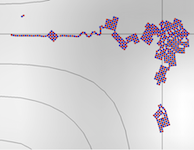
|
Background A large effort of our group is to leverage high-fidelity simulation tools to go beyond predictions and inform sensitivity that can be used in optimizing quantities of interest. For example,due to the detailed chemical processes and non-trivial flow dynamics common in turbulent combustion devices, in addition to the various parameters associated with localized ignition, a large number of modeling parameters are required to capture the relevant physics. Understanding the sensitivity of ignition to such parameters is important for the development of predictive (and tractable) simulations. However, measuring the sensitivity directly is prohibitive for many practical systems. To this end, the adjoint equations were recently formulated for the reactive compressible Navier-Stokes equations. We use a discrete-exact adjoint method to directly measure sensitivity of ignition to modeling parameters in premixed and non-premixed configurations. |
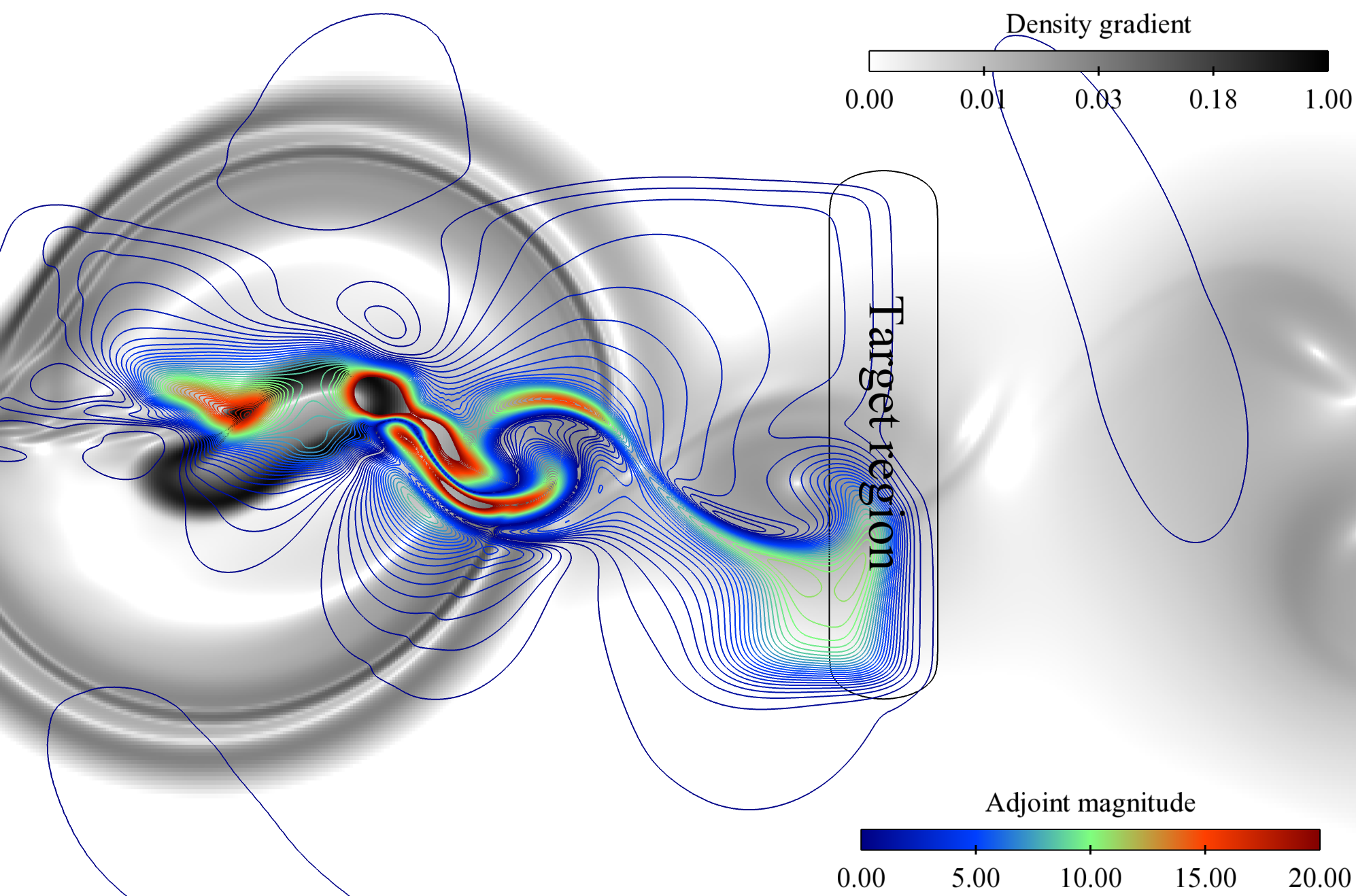 Discrete-exact adjoint field shortly after ignition in a 2D hydrogen-air mixing layer. |
